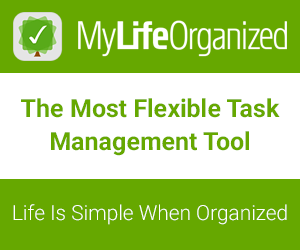When you run a business, you understand the importance of organization in your accounting practices. It’s easy to recognize when your processes aren’t optimal: You’re repeating mundane tasks, you can’t quite put your finger on what you need quickly, and you don’t have a workflow in place that streamlines the job. In short, you’re working significantly harder than you should be, and you don’t seem to be getting ahead. What gives?
Somewhere in your accounting system, there’s a gap that isn’t working efficiently. When you fix this (or these) gap(s), the rest of your workflow runs smoothly, saving you valuable time and resources. How do you know where your process needs a little TLC? Follow these tips, and you’ll have a streamlined accounting workflow that takes the focus off of accounting and lets you give more time and attention to your team and clients.
Start With Your Technology
What does your workflow currently look like? Your technology should reduce the steps from start to finish, automating many repetitive tasks. If you regularly work on redundant jobs that could easily be automated, you’re wasting time and money. Take some time to assess what you and your team do on a daily basis. Where are the risks? Are there any opportunities that could be improved? Then, using those lists, break down the risks and improvement opportunities by priorities.
In accounting, risks should always be covered first to prevent expensive breaches. Once those are addressed, you can work with your team to come up with ideas on how to improve the workflow. Those suggestions will lead you to a better accounting system, such as project management software designed for accountants, that reduces redundancies and automates much of the work. When your team isn’t busy with mundane tasks, they can move their focus toward proactive measures and client-centric jobs. Accelo explains the features to look for in accountant-focused project management systems here.
Connect Your Platforms
Now that you have a better idea of where your risks and opportunities can be improved, it’s time to use the technology you have to reach your efficiency goals. Whether you’ve invested in an account-specific platform or continue using what you currently have, each program should be integrated to reduce data entry.
For example, entering debits and credits in your accounting software is an essential step in record keeping. But if you need to re-enter that same information in another program to monitor budgets and expenditures, that qualifies as unnecessary work. Instead, use software that “talks” to each other to connect the data and smooth the workflow.
Prepare For Taxes
The ultimate reason any of us use accounting software in business is because we know we’ll have to file taxes and keep records of our transactions. Since you know this, why not integrate processes that streamline your tax returns at the end of the fiscal year? Use software that automates data entry and lets you outsource your information to other parties with the correct verification. If you use cryptocurrency in your business, be sure that your software includes the updated regulations and practices that guide this type of economic compliance.
With a tax-focused approach to data entry, delivering information to each client as necessary and creating your returns becomes seamless. You may even be able to e-file without too much repetition.
Look For Resource-Saving Approaches
Open communication up to your team and ask them to share the tasks they do each day that account for wasted time. Maybe they think copying receipts into a file takes too much time because your scanner is obsolete. Or searching for files on the computer is a headache because the organization is scattered and inefficient.
As management, it’s common to know your team’s “roles,” but when it comes down to the details of the day, you aren’t monitoring their every move. By requesting and valuing feedback, you’ll learn what areas of the accounting workflow are working and which ones need to be addressed and updated. You can then include the new approaches in your onboarding processes to make it possible for recent hires to jump right in and work efficiently.
Conclusion
When you’re ready to make big changes that produce maximally efficient accounting processes, start with a thorough review of your current workflow. Talk to your team and identify risks and opportunities, then look for software solutions that integrate with your existing essential programs and streamline the job.
Image Credits: StellrWeb




Like this article? Share with your friends!